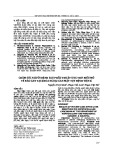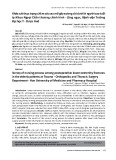
Care of the Client with Cranial
Surgery
Kathleen Ohman, RN, CCRN, EdD
Developed in cooperation with Kim Scott, RN, MS


Indications for Cranial Surgery
Intracranial infection (abscess) - usually
staphylococci or streptococci. Cranial surgery
performed to open and drain abscess
Epilepsy - Cranial surgery to remove the epileptic
focus for patients whose epilepsy cannot be
controlled by drug therapy
Skull fractures - for depressed fracture or fracture
with loose fragments. Cranial surgery necessary to
elevate depressed bone and/or remove fragments

Indications for Cranial Surgery Brain Tumors
Steriotactical techniques used to perform biopsy
and/or remove small tumors
Location and type determines if surgical removal
possible
Tumors located in deep central areas of brain
inoperable
Cranial surgery performed if tumor is removable

Brain Tumors (cont.)
Primary tumors - arise from tissues in the brain
Secondary tumors - result from metatastisis from malignant
neoplasm elsewhere in body
Gliomas account for 65% of primary tumors (malignant)
Astrocytoma- most common glioma
Oligodendroglioma-often localized frontally
Glioblastoma multiforme highly malignant and invasive
Meningioma and Pituitary tumors
Benign
Tend to recur
Unless treated, all tumors cause death from increased tumor
volume leading to increased ICP











![Bài giảng Chăm sóc giảm nhẹ ThS. Đặng Mỹ Hạnh [mới nhất]](https://cdn.tailieu.vn/images/document/thumbnail/2025/20250820/hongphucpn/135x160/12651755742466.jpg)





![Bài giảng Bổ thể BS. Nguyễn Thị Như Ly [mới nhất]](https://cdn.tailieu.vn/images/document/thumbnail/2025/20250812/vijiraiya/135x160/85031754973807.jpg)








